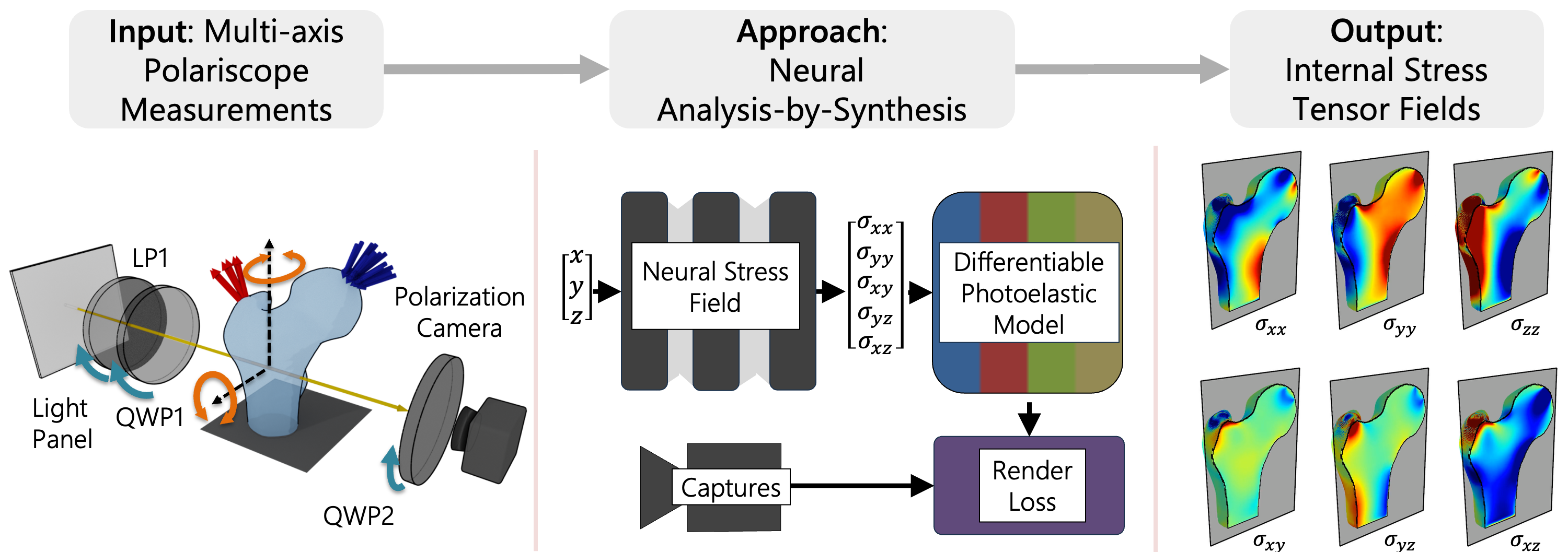Photoelasticity: Polarization encodes stress

Photoelasticity enables full-field stress analysis in transparent objects through stress-induced birefringence. Existing techniques are limited to 2D slices and require destructively slicing the object. Recovering the internal 3D stress distribution of the entire object is challenging as it involves solving a tensor tomography problem and handling phase wrapping ambiguities. We introduce NeST, an analysis-by-synthesis approach for reconstructing 3D stress tensor fields as neural implicit representations from polarization measurements. Our key insight is to jointly handle phase unwrapping and tensor tomography using a differentiable forward model based on Jones calculus. Our non-linear model faithfully matches real captures, unlike prior linear approximations. We develop an experimental multi-axis polariscope setup to capture 3D photoelasticity and experimentally demonstrate that NeST reconstructs the internal stress distribution for objects with varying shape and force conditions. Additionally, we showcase novel applications in stress analysis, such as visualizing photoelastic fringes by virtually slicing the object and viewing photoelastic fringes from unseen viewpoints. NeST paves the way for scalable non-destructive 3D photoelastic analysis.



@article{dave2025nest,
title = {NeST: Neural Stress Tensor Tomography by leveraging 3D Photoelasticity},
author = {Dave, Akshat and Zhang, Tianyi and Young, Aaron and Raskar, Ramesh and Heidrich, Wolfgang and Veeraraghavan, Ashok},
journal = {ACM Transactions on Graphics},
year = {2025},
volume = {44},
number = {2},
pages = {1--18},
doi = {10.1145/3723873}
}